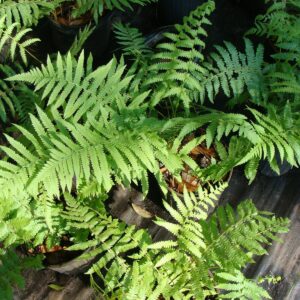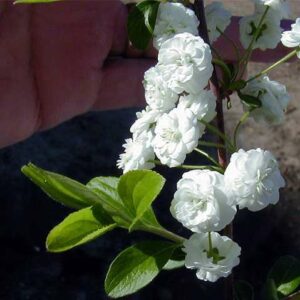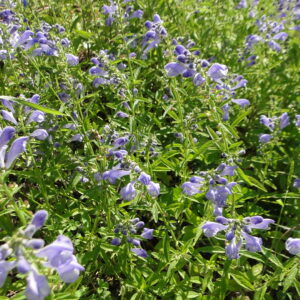Price range: $15.00 through $25.00
Description
This Small native deciduous tree blooms prolifically. Fruits are relished by songbirds and small mammals. (Read the faunal associations notes below to find more about its wildlife value.) Sun or part-shade. Average to moist conditions. Root-prune to control spread. Will bloom even if cut to the ground in winter.
We propagated our plants from two different native populations in Beaufort Co., SC. Plant one of each to get better pollination and fruit set.
“Advance” produces a large amount of bipinnately compound leaves.
“Roseida” hose attractive dark purple (almost black) stems made it stand out from the other Elderberries nearby. This is our first year growing it, so we do not know whether they will have dark purple stems when planted in other locations. Please let us know how they grow in your garden.
Faunal Associations: The flowers provide only pollen as a floral reward to insect visitors. This attracts a variety of insects, including honeybees, little carpenter bees (Ceratina spp.), Halictid bees, Syrphid flies, bee flies (Bombyliidae), Muscid flies, other miscellaneous flies, long-horned beetles (Cerambycidae), tumbling flower beetles (Mordellidae), and other miscellaneous beetles. Little carpenter bees and mason bees (Osmia spp.) also construct nests for their larvae by tunneling into the soft pith of broken stems, causing little damage. Other insects feed destructively on the foliage, roots, and other parts of Common Elderberry (Sambucus nigra canadensis). These species include root- and stem-boring larvae of the Elderberry Longhorn (Desmocerus palliatus), stem-boring larvae of the Elder Borer Moth (Achetodes zeae), the Elder Aphid (Aphis sambuci), Elder Thrips (Neohydatothrips sambuci), and a flower- and fruit-eating plant bug (Neurocolpus jessiae). The Insect Table has a more complete list of insects feeding on Common Elderberry and other elderberry shrubs (Sambucus spp.). Some vertebrate animals also use Common Elderberry as a source of food, especially birds. Birds that eat the small fruits include the Ruffed Grouse, Ring-necked Pheasant, Greater Prairie Chicken, Eastern Bluebird, Northern Cardinal, Gray Catbird, Northern Mockingbird, American Robin, House Finch, Wood Thrush, Red-eyed Vireo, Cedar Waxwing, and White-throated Sparrow. The Bird Table has a more complete list of these fruit-eating birds. Mammals that consume the fruits include the Fox Squirrel, Red Squirrel, and White-footed Mouse (Martin et al., 1951/1961), and there are some records of the Eastern Box Turtle (Terrapene carolina) and Eastern Mud Turtle (Kinosternum subrubrum) also consuming the fruits (Ernst et al., 1994). Because the foliage of Common Elderberry is bitter and toxic, it is rarely consumed by mammalian herbivores, although there are some records of White-tailed Deer browsing on it to a limited extent. This toxicity decreases during the autumn. Cottontail Rabbits sometimes gnaw on the bark during the winter as an emergency source of food. excerpt from www.illinoiswildflowers.info
Additional information
| Size | Qt pot, 1 gallon, 3 gallon |
|---|





